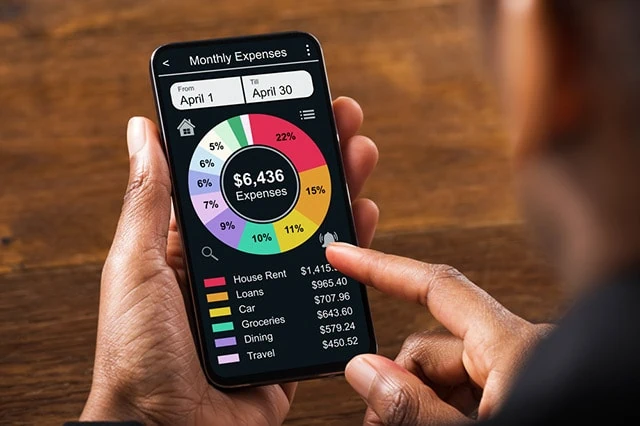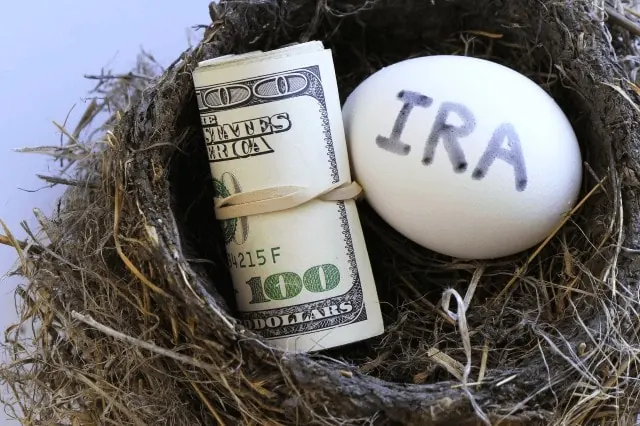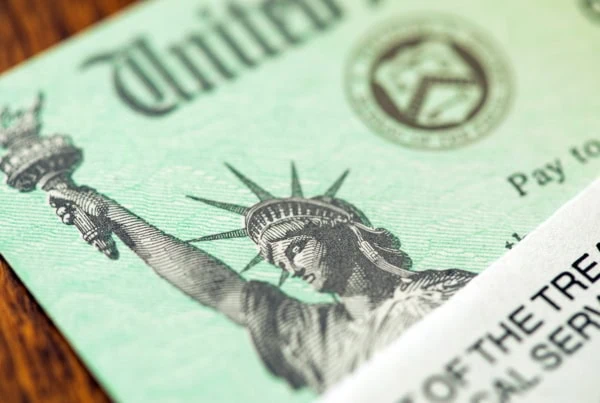You might daydream about retirement, but actually planning and stashing away money can feel like a nightmare.
Indeed, some people push it out of their periphery, instead focusing on short- and medium-term goals, such as vacations or a home down payment.
That’s not to say those expenditures aren’t important. But at some point, you’re going to have to ask yourself “Am I really saving enough for retirement?” And if you haven’t prioritized your nest egg, you might not like the answer.
But how do you actually know the answer? Well, today, I’m going to show you a few warning signs that you might not be saving enough. And if several of the signs apply to you, don’t worry—we’ll go through a few quick tips on how to begin the catch-up process.
How Much Should You Save for Retirement?

Your retirement “magic number”—how much you need to have saved by the time you retire to generate enough annual income for all of your expenses—is unique to you. You might need $1 million, your neighbor might need $800,000, and the person across the street might need $2 million.
But there are some quick-and-dirty numbers you can look at to at least get a broad idea for whether you need to put your foot on the gas or keep coasting along.
Fidelity, for instance, suggests the following guidelines for how much you should have in retirement savings at the following ages:
- By age 30: 1 times your annual salary
- By age 40: 3 times your annual salary
- By age 50: 6 times your annual salary
- By age 60: 8 times your annual salary
These numbers assume you plan to maintain your pre-retirement lifestyle rather than live more frugally or extravagantly.
While these goalposts offer a general idea of whether or not you’re on track, you’ll have a better idea once you create a retirement budget.
Until then, you can check to see if you’re flashing any of these common signs that you might not be saving enough money for retirement:
Actions That Signal You’re Not Saving Enough

There are plenty of warning signs that might signal that you won’t reach your retirement “magic number” in time without making some adjustments.
I’d like to emphasize “might.” Without a little discipline and putting together a full financial plan (whether you do it yourself or have someone do it for you), it’ll be difficult to know for sure. So consider the following general signs that might indicate a problem—and then you can talk to a financial professional about getting a clearer retirement picture and taking steps to fix what’s wrong.
1. You haven’t started saving for retirement

Let’s start with the obvious! If you haven’t already started saving for retirement, you should start—because the longer you wait, the less time you have to save the amount you need.
According to a 2024 Voya Consumer Insights & Research survey, the average age respondents started saving for retirement was 28 years old. Meanwhile, 64% said they wished they had started saving earlier than age 25.
Why? Because even saving a small amount early on can make a significant difference once you reach retirement. You can thank the power of compounding for that.
Here’s an example.
- At age 25, you put $1,000 into a retirement account, and you contribute $100 a month after that. You earn a 10% average annual return. You do this for 40 years until you retire at age 65. You’ll have earned $576,370.32 by the time you retire.
- If you do the same thing at age 35, and do this for 30 years until you retire at age 65, you’ll have earned just $214,842.23.
This is just an example—you’d want to save a lot more, and your rate of return might be different, and when you retire might differ—but you can see how the earlier you start, the better off you are, even if you’re not investing very much at the beginning.
Whatever you do, don’t think “I’m too far behind.” No matter what age you are when you start investing, you’re putting yourself in a better place than your current retirement situation.
Related: 13 Baby Boomer Retirement Statistics You Should Know
2. You don’t prioritize saving for retirement in your budget

Let’s say you do put money away, but what gets tossed into your retirement account is just what’s “left over” when you pay for all of your other expenses.
You have a change to make.
Yes, the things you need to live—rent/mortgage, utilities, groceries, all of your necessary purchases—must come first. But where many people go wrong is only investing with money that’s left over after discretionary spending, such as streaming subscriptions, going out to restaurants, and the like.
When you create your budget, retirement saving should be factored in before discretionary purchases. That can be a difficult habit to start, so one way to do it is to make automatic deductions from every paycheck.
Once you start the habit, remember to tweak your budget as your finances change over time. For example, if you got a raise, you should increase your allocation to retirement savings before that extra money goes toward lifestyle creep.
Related: 8 Special Tax Breaks for Senior Citizens
3. You’re unsure of what you’re invested in for retirement

Contributing to a retirement account is a great start toward saving enough for your non-working years. But is your money invested in products that make sense for your age, goals, and risk tolerance?
In a 2023 CNBC Your Money survey, 46% of respondents said they didn’t know what investments were in their 401(k).
While it’s generally a bad idea to constantly monitor and tweak your 401(k), you should at least be aware of how your money is being invested. If you blindly allocated money into funds that, say, don’t grow enough when you’re young, or are too aggressive when you’re about to exit the workforce, you might not achieve your retirement goals.
Related: 6 HSA Money Mistakes to Avoid
4. You think Social Security will cover all of your retirement expenses

You almost certainly won’t be able to live solely off your Social Security benefits.
Social Security isn’t designed to completely replace your working-age income. The Social Security Administration even says it in pretty plain language: “On average, Social Security will replace about 40% of your annual pre-retirement earnings, although this can vary based on each person’s circumstances.”
Fortunately, the amount of Social Security you’ll receive isn’t a complete mystery. You can get an estimate of how much in Social Security benefits you’ll receive based on your income and the age you intend to begin receiving payments.
Related: What Is the Social Security COLA?
5. You’re counting on someone else to fund your retirement

Do you think a future inheritance will be enough to fund your retirement?
It’d be nice, but don’t bank on it.
Your parents might live much longer than they expected, spend money on dream vacations, or end up paying an exorbitant amount on end-of-life health care expenses. Some retirees might also be living above their means and be deep in debt, unbeknownst to their children. Others might remarry and decide to leave much of their estate behind to the new spouse, rather than their children.
And even if you have wealthy parents, there is no guarantee you’ll be left with enough money to fund your own retirement. Ask the kids of Jackie Chan, Simon Cowell, and Sting—among a number of celebrities who have vowed to leave less for their heirs than you might expect.
A 2021 University of Pennsylvania Wharton School study showed that the median inheritance for people under age 46 was under $10,000. And for older adults, the median amount was still consistently under $20,000. Plus, an inheritance could be lowered by estate taxes, funeral costs, attorney’s fees, and other expenses.
Consider any inheritance you may receive as a bonus, rather than money you’re counting on for retirement.
Related: What Is Medicare? A Guide to Types of Medicare Coverage
6. You aren’t saving enough to earn your employer’s maximum contribution match

The 401(k) is one of the most common types of retirement account. These are offered by employers to help their employees save, they’re simple to contribute to, and they enjoy enormous tax benefits you don’t get from a standard brokerage account.
And many employers offer a sweetener: A 401(k) “match,” where an employer matches your contributions up to a certain percentage of salary or dollar amount.
Data from Vanguard’s 2024 How America Saves report shows that in 2023, most Vanguard plans offered some sort of contribution:
- 50% offered only a matching contribution
- 10% offered only a nonmatching employer contribution (employer will contribute something no matter what)
- 36% offered both matching and nonmatching employer contributions
But if you’re not maxing out your 401(k) match, you’re leaving free money on the table. Let’s say you earn $80,000 a year. Your employer offers a 3% match. So if you contribute 3% ($2,400), your employer will actually kick in a full 3% match ($2,400), for a total of $4,800. If you contribute just 2%, you’re giving up $800 in free contributions; if you contribute 1%, you’re missing out on $1,600; and if you contribute nothing, that’s $2,400 in free contributions you’re missing out on.
In other words, not contributing to your 401(k) when a match is on the table … it doesn’t necessarily mean you’ll miss your retirement goals, but it does mean you’re taking a pass on a program that could wildly accelerate your savings.
Related: When Should You Take Social Security?
7. You’re not saving enough in tax-advantaged retirement accounts

A 401(k) isn’t the only place you can save, of course.
Even if you max out your 401(k), you can still sock away money into an individual retirement account (IRA), up to the IRA contribution limit, which is $7,000 in both 2024 and 2025.
IRAs are similar to 401(k)s in that they are tax-advantaged. What that advantage is depends on the type of account. A traditional IRA, like a traditional 401(k), allows you to contribute money on a pretax basis, then grow your money tax-free inside of the account. You’re only taxed once you withdraw the money, which you can do penalty-free once you reach age 59½. Meanwhile, a Roth IRA, like a Roth 401(k), allows you contribute money that has already been taxed, but the money grows tax-free while inside the account, and you can withdraw the money tax-free at age 59½.
Related: Health Care Costs in Retirement [Amounts & Types to Expect]
8. You’re accumulating debt and not paying it off as you near retirement

Generally speaking, the more debt a person has as they enter retirement, a.) the less money they’ll have available for other expenses, and b.) the less chance that they’ve had the cash available to save adequately for retirement to begin with.
Of course, not all debt is the same.
People with a low-interest mortgage don’t always need to prioritize paying it off ahead of schedule, nor paying it off before retirement. In fact, if you have extra money available to you and you can expect market returns higher than your debt rate (which is likely at many common mortgage rates), you’d actually see more financial benefit from stashing that money away in a retirement account rather than paying off your mortgage early.
However, high-interest debt, such as credit card debt, should be a priority. Left unpaid, it can snowball into unmanageable amounts, and soak up cash in the form of interest payments that could otherwise be spent saving for retirement.
Related: Does Your Credit Score Matter in Retirement?
9. You’re underestimating how much money you’ll need in your retirement budget

Your retirement budget will probably be different from your current working-age budget—happily, and more specifically, it should get smaller. Many things get cheaper when you retire.
But it’s still easy to underestimate your retirement costs.
Newfound free time can lead to spending more on hobbies. You might have expensive health care costs not covered by Medicare. As you age, some of the tasks you previously handled might be appropriate to outsource to others, such as home repairs.
As a basic estimation, you can expect your retirement budget to be roughly 80% of your working income. But as you approach retirement, you should do the math to determine a number more accurate to your situation (or have a financial advisor do those calculations for you).
Related: 10 Ways Seniors Can Avoid “Medical Gaslighting” and Advocate for Themselves
10. You’re not budgeting for inflation in retirement

Cash in your wallet today will have less spending power in the future because of inflation. The Bureau of Labor Statistics’ CPI Inflation Calculator shows that a lifestyle costing $150,000 in 2004 would have cost nearly $250,000 just two decades later!
It’s essential your retirement budget accounts for inflation. The Federal Reserve uses a 2% target rate of inflation that educates its monetary policy. However, that target isn’t always how everything plays out; the past few years have had some big swings in both directions. Average annual inflation rates for the last few years were as follows:
- 2020: 1.4%
- 2021: 7.0%
- 2022: 6.5%
- 2023: 3.4%
Given that this rate can vary, it’s better to assume a slightly higher rate, such as 3% annually. This gives you a better chance of having a sufficient retirement nest egg built up.
Related: What Are the Average Retirement Savings By Age?
11. You don’t have a financial advisor

A financial advisor can help you with a great many things, including determining whether you’re on track to save enough for retirement, helping you build a retirement plan, and helping you invest in financial products that will help you reach your goals.
They’re generally well-favored. According to Northwestern Mutual’s 2024 Planning & Progress Study, 75% of Americans with an advisor think they will be financially prepared to retire. Meanwhile, fewer than half (45%) of people without an advisor feel the same.
The benefits of a good financial advisor aren’t just monetary—they can be emotional too. Handing off the burden of retirement planning over to another person can reduce your stress and build your confidence as you approach retirement.
Related: How to Choose a Financial Advisor
How to Catch Up on Your Retirement Savings

If you even think your nest egg is behind schedule, you can get back on track in a number of ways.
This assumes, of course, that you have the available funds to do so. If you’re living paycheck to paycheck, you obviously need to take care of your immediate needs before socking money away.
- Contribute at least as much as it takes to get your employer’s full 401(k) match: If your employer will match 4%, contribute at least 4%. If your employer will match 2% … you get the picture.
- Max out your 401(k): The 401(k) contribution limit is $23,000 in 2024, and $23,500 in 2025. (This is across all 401(k) accounts you can contribute to, but most people can only contribute to one.)
- Max out your IRA: As mentioned before, the IRA contribution maximum is $7,000. This max applies across all IRAs, so it’s $7,000 split among two or more IRAs, not $7,000 for each.
- Invest in your HSA: If you have a health savings account (HSA) that you don’t use for the purposes of health care expenses. The HSA contribution limits are $4,150 for self-only coverage and $8,300 for family coverage in 2024; and $4,300 for self-only coverage and $8,550 for family coverage in 2025. You can contribute pre-tax dollars, money can grow in the HSA tax-free, and you can withdraw money penalty- and tax-free at any time for qualified health care expenses; once you reach age 65, you can withdraw penalty-free (though you still have to pay taxes) for any type of expenditure.
- Take advantage of catch-up contributions: People 50 and older can make additional “catch-up” contributions to their accounts each year. The following limits are for 2025:
- 401(k) (excluding SIMPLE 401(k) plans), 403(b), governmental 457(b): $7,500 for ages 50-59, $11,250 for ages 60-63
- Traditional or Roth IRA: $1,000
- SARSEP: $7,500
- SIMPLE 401(k): $3,500
- SIMPLE IRA: $3,500
- HSA: $1,000
- Automate your retirement contributions: If you have enough money in your budget to regularly build your nest egg, set up your IRA or other personal account to automatically withdraw a certain amount of money every time you receive a paycheck.
Related: 8 Ways Travel Can Be More Expensive for Senior Citizens








